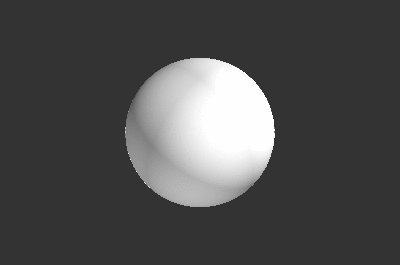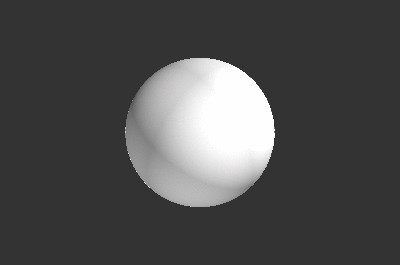My PhD research
Asteroseismic modelling of intermediate-mass stars
Two of the most impactful open questions in stellar structure and evolution theory concern the mechanism(s) driving the transport of chemical elements and angular momentum. The physical mechanisms at play and the corresponding efficiencies are not fully understood at present. A better understanding of these mechanisms is of great importance to many fields of astrophysics, such as studies of chemical enrichment, evolved stars and stellar remnants, galactic archeology, and exoplanets, as these all rely on accurate predictions of stellar evolution.
Asteroseismology, the study of stellar pulsations, has proven to be a powerful tool in constraining stellar interiors to high precision. The so-called gravity (g) modes are oscillations restored by the buoyancy force and are most sensitive to properties of the deep stellar interior. These stellar pulsations are described by spherical harmonics. The animations below illustrate what these spherical harmonics look like (in real stars the amplitudes are much smaller).


Asteroseismic masses, ages, and core properties of γ Doradus stars using gravito-inertial dipole modes and spectroscopy
We successfully inferred (core) masses and hydrogen mass fractions in the convective core (used as a proxy for age) for a sample of 37 F-type g-mode pulsators,
relying on a newly developed statistical method to perform ensemble modelling. As asteroseismic input, we used the so-called
You can find more details here.
Asteroseismic Modeling of Gravity Modes in Slowly Rotating A/F Stars with Radiative Levitation
It is known from first principles that microscopic mixing, i.e. atomic diffusion and radiative levitation, occurs in stars. Yet, radiative levitation is often ignored because of computational reasons. We modelled the observed g-mode pulsation frequencies of two slowly rotating stars, for which the counteraction of microscopic mixing by rotationally-induced mixing is expected to be minimal. The modelling was done for models with and without microscopic mixing, illustrating that even though these processes are often ignored for computational reasons, they strongly affect mass and age determination of F-type stars. For one star, the agreement between the predicted and observed mode periods is improved by a statistically significant amount when models with microscopic diffusion are used. Moreover, when microscopic mixing is included, the evolution of the surface abundances can be used as additional constraints in the modelling. We found that several measured surface abundances of this one star are also indeed better explained by models with microscopic mixing included.
You can find more details here.
Constraining stellar evolution theory with asteroseismology of γ Doradus stars using deep learning. Stellar masses, ages, and core-boundary mixing
In my third paper, I improved upon the modelling method based on the buoyancy travel time by performing a more detailed modelling of the individual mode periods of each star. This way, we were able to measure mixing efficiencies at the convective core boundary (needed for accurate estimates of stellar ages). To do so, I implemented deep learning to solve the problem of high dimensionality, which has always been a showstopper in the modelling of a large sample of stars. I trained a neural network for Computing Pulsation Periods and Photospheric Observables (C-3PO) on a grid of 1D MESA stellar evolution models and GYRE pulsation models to predict mode periods, effective temperatures, surface gravitites, and luminosities, for a given set of stellar input parameters. This way, we were able to probe the efficiency of core-boundary mixing (convective core overshoot) on a massive scale. We showed that the efficiency of core-boundary mixing for these single F-type stars exhibits no clear correlation with stellar mass, age or rotation.
You can find more details here.
Predictions for gravity-mode periods and surface abundances in intermediate-mass dwarfs from shear mixing and radiative levitation
In the previous paper, we observed a dichotomy in the sample of 37 g-mode pulsators. For one group of stars we can model the observed mode periods accurately by assuming a constant value (both in radius and time) for the chemical mixing efficiency in the radiative envelope, while for another group, this value would have to be orders of magnitude lower than what is predicted from theory in order to reproduce a strong chemical gradient near the convective core boundary. Furthermore, we know the microscopic diffusion in the form of atomic diffusion and raditive levitation occurs in stars, where the gravitational settling of helium reduces the chemical gradient, thus not helping to create a chemical gradient which we deduce from the observed modes in some stars. The inclusion of microscopic diffusion is often neglected in stellar models for reasons of computation time. In this paper, we present a new routine to compute radiative levitation and consistent Rosseland mean opacities in the MESA code, yielding a speed-up of more than a factor 4. In addition, I have implemented a new routine to predict the chemical mixing induced by shear mixing, relying on 2D stellar structure models from the ESTER code to compute the predicted rotation profile. The combination of microscopic mixing and shear mixing does allow us to reproduce the observed magnitude of the chemcial gradient that is observed in some stars with realistic values for the diffusion coefficient. Moreover, we present the predicted evolution of the surface abundances, and show that the N/C and C/O abundance ratios correlate with stellar age. This means that these ratios can be used as additional constraints in the chemical mixing efficiency, when they can be measured with a high precision (less than 0.1 dex).
You can find more details here.